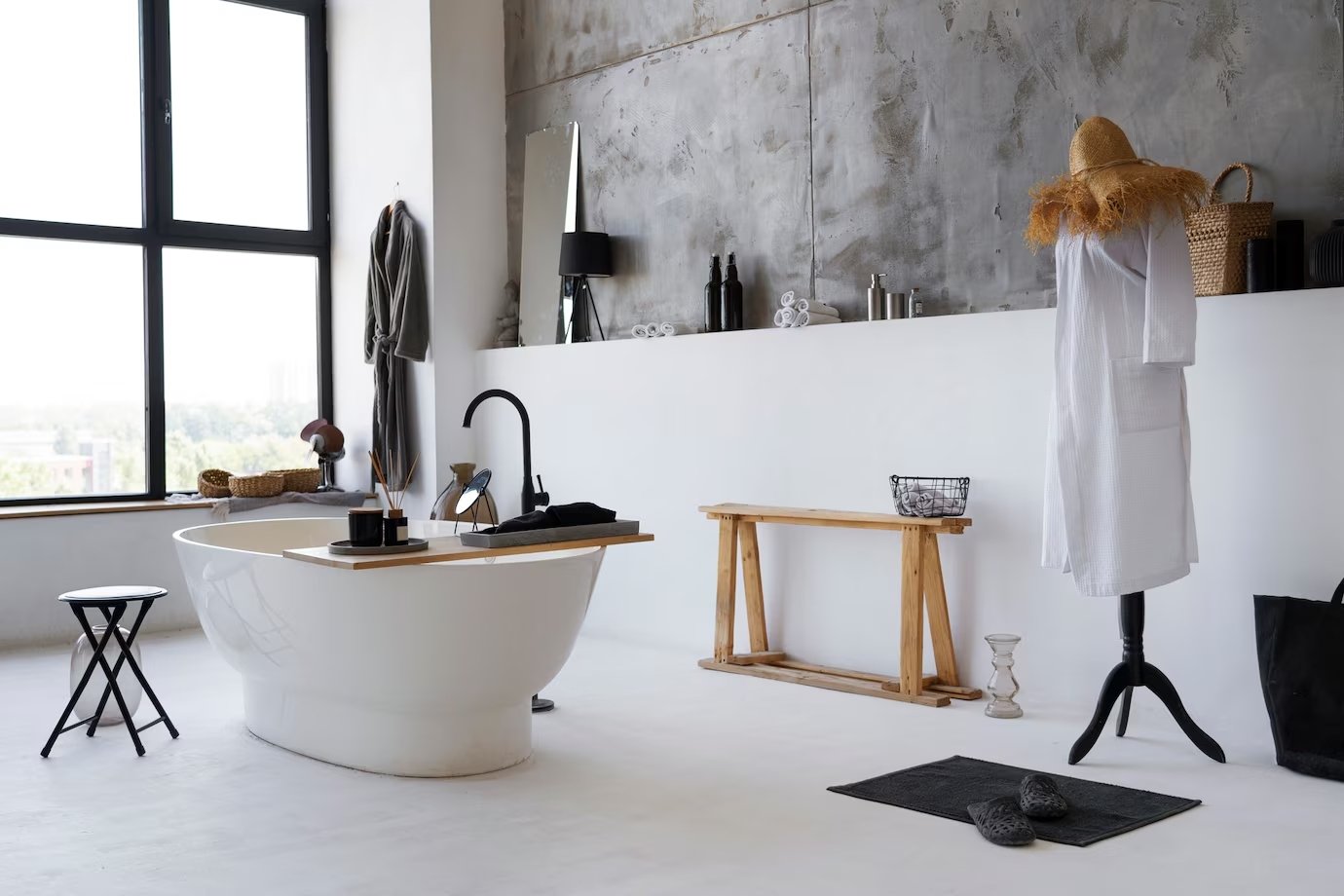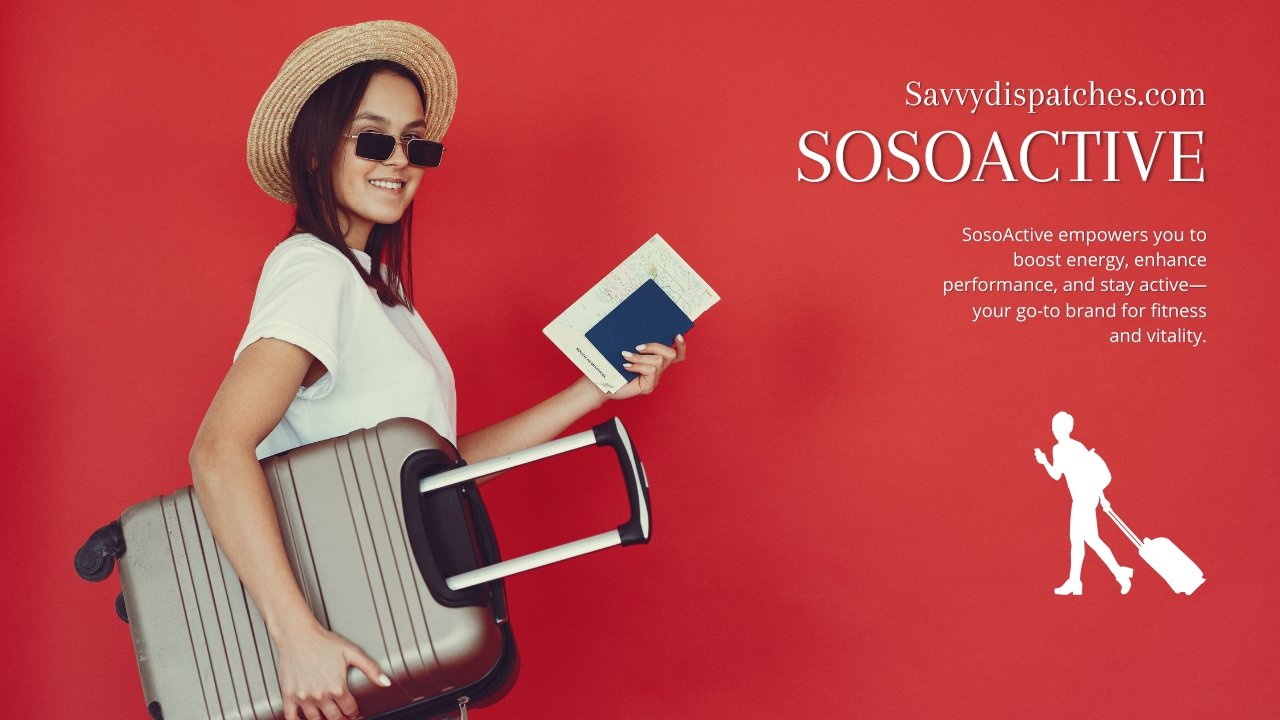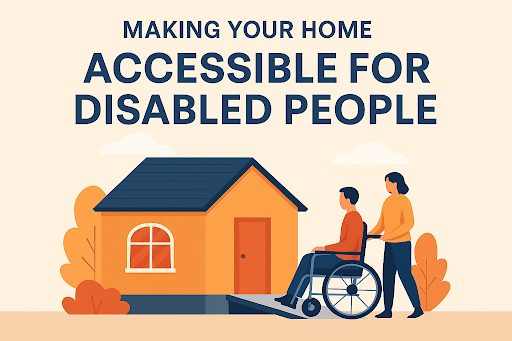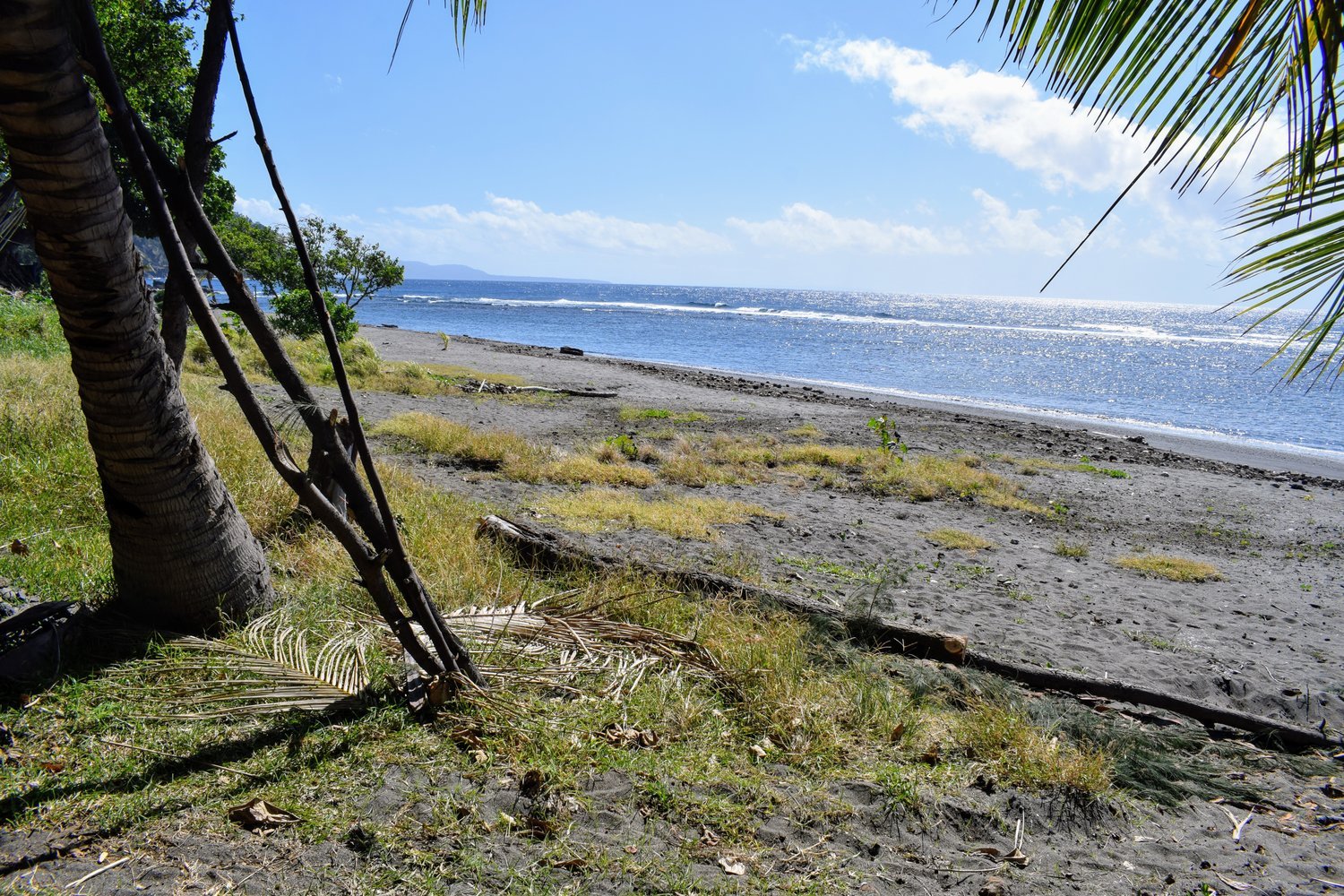Lifestyle
Making Showers Accessible: A Comprehensive Guide to Creating Safe and Stylish Bathrooms

Key Takeaways
- Learn how to create an accessible and stylish bathroom.
- Discover the benefits of easy-access showers for various age groups.
- Understand the essential features for safety and convenience.
- Gain insights on incorporating modern design elements in accessible bathrooms.
Why Accessibility in Bathrooms Matters
The worldwide demographic shift towards an aging population has prompted significant interest in home adaptations that support independent living.
As emphasized by the Centers for Disease Control and Prevention, falls are a leading cause of injury amongst older adults, leading to profound health implications and loss of independence. Hence, modifying bathrooms to prevent such incidents is not only a safety precaution but a necessary step in enhancing the quality of life for seniors. An accessible bathroom ensures that individuals can manage their self-care routines with dignity and without fear.
Essential Features of Easy-Access Showers
An easy-access shower brings the concept of universal design into the bathroom, emphasizing safety without compromising aesthetics. Walk-in shower designs are crucial; they remove the barriers posed by traditional bathtubs and high-threshold showers, facilitating easier access. This feature mainly benefits wheelchair users or those who find lifting their legs over a bathtub edge challenging. Among these adaptations, the Safe and Stylish Walk-In Showers concept has emerged as an essential feature. These showers provide a harmonious blend of safety and sophistication, crucial for households looking to support family members either living with mobility issues or simply wanting to future-proof their living spaces against the challenges of aging.
The choice of materials also plays a pivotal role in safety. Non-slip flooring options such as textured tiles or specialized mats dramatically reduce the risk of slipping, a common hazard in moist environments. Additionally, lever-style controls are designed for simplicity and efficiency, allowing users to adjust temperature and water flow with minimal effort, accommodating varying levels of dexterity.
Moreover, built-in seating enhances the bathing experience by offering a stationary place to sit while showering. This fixture caters to seniors and individuals needing to sit for balance or rest, thus broadening the accessibility appeal.
Benefits for All Ages
Beyond serving aging populations, easy-access showers cater to a broader demographic, proving invaluable for families with young children and individuals recovering from injuries. Their user-friendly design minimizes the risk of falls, a significant concern when children move swiftly or unexpectedly in slippery environments. For parents, this translates to reduced worry during bath time.
Moreover, young adults and middle-aged homeowners increasingly recognize the value of incorporating such installations early for immediate use and as a long-term investment in their homes. The proactive adaptation of accessible showers points to a growing trend of integrating lifetime value into home design, ensuring the house remains a sanctuary at every life stage.
Design Elements for a Modern Accessible Bathroom
Accessibility in the bathroom can be seamlessly interwoven with modern design aesthetics. This fusion ensures homeowners do not have to choose between safety and style. Lighting is a key element, where well-placed, ample illumination can highlight the space’s beauty and increase safety by reducing shadows that might obscure potential hazards.
Ergonomic fixtures, which are designed with user comfort in mind, should also align with contemporary trends. Items like stylish grab bars and handrails made from brushed metals or colored to match the bathroom palette can provide support while accentuating the room’s decor. These features are essential for maintaining safety, yet they can reflect the homeowner’s taste and attention to detail.
Remodeling Tips for an Accessible Bathroom
Planning and budgeting are critical when preparing for a bathroom remodel, particularly with accessibility in mind. First, prioritize features based on the specific needs of the household members who will use them most. Consulting professionals with experience in accessible design can provide valuable insights into selecting and installing innovative solutions that tailor-fit a home’s unique requirements.
Consider setting aside funds for noticeable changes like easy-access showers and necessary minor adjustments such as widening doorways or lowering counter heights. This holistic approach ensures the entire bathroom space is usable for everyone and increases the home’s market value, appealing to future buyers with similar needs or priorities.
Real-Life Success Stories
The transformation of a bathroom into an accessible haven often profoundly impacts its users’ lives. Hearing from those undertaking such projects can provide inspiration and practical lessons for others considering similar changes. Stories abound of individuals who have experienced a renewed sense of independence and safety, often expressing how these changes allowed them or their loved ones to continue living at home rather than seeking assisted living options.
These narratives highlight the emotional and financial benefits of investing in accessibility, serving as powerful testimonials to the advantages of planning for inclusive living spaces.
Maintaining Your Accessible Shower
Regular maintenance ensures an accessible shower retains its convenience and safety over time. Keeping non-slip surfaces free of soap residue and mineral buildup is crucial to preserving their efficacy. Simple cleaning routines can prevent these surfaces from becoming hazards themselves.
Furthermore, the functional longevity of features like grab bars and seating can be maintained with routine inspections to check for wear and tear. Maintaining vigilance in assessing these elements ensures continued safety. The Mayo Clinic suggests practical home safety measures that can equally apply to maintaining safe shower environments, underscoring preventative care and proactive measures as keys to enduring safety.
The Future of Accessible Bathroom Design
Technological advancements continue to revolutionize bathroom design, with accessibility at the forefront of new innovations. Innovative technology like voice-activated controls, sensors, and automatic temperature adjustments are high-tech additions and practical tools that enhance user experience by offering greater control and customization.
The trend towards sustainable and environmentally friendly materials will also inform safe, stylish designs and conscientiousness of the broader impact on our world. The intersection of accessibility, technology, and sustainable living offers exciting prospects for future bathroom innovations, ensuring spaces designed today will meet tomorrow’s needs.
Lifestyle
SosoActive: Energize Your Life, Elevate Your Performance

Are you ready to supercharge your life? In a world that constantly demands more from us, staying active is crucial. Whether it’s for physical health or mental clarity, being active can significantly enhance our daily lives. Enter SosoActive—a game-changing solution designed to help you energize your lifestyle and elevate your performance. If you’re looking for a way to boost both your productivity and well-being, keep reading. Discover how SosoActive can transform not just the way you move but also how you tackle each day!
The Importance of Being Active
Staying active is more than just a trend; it’s essential for overall well-being. Regular movement fuels the body and mind, promoting better health outcomes.
Physical activity reduces the risk of chronic diseases like heart disease and diabetes. It keeps your muscles strong and joints flexible, allowing you to enjoy life without restrictions.
Mental health also reaps rewards from an active lifestyle. Exercise releases endorphins, the body’s natural mood lifters. This can reduce stress levels and combat anxiety.
Moreover, being active enhances cognitive functions such as memory and focus. Whether you’re hitting the gym or enjoying a brisk walk in nature, each step contributes to sharper thinking.
Engaging in physical activities fosters social connections too. Group workouts or team sports build friendships while motivating you to stay on track with your fitness goals.
What is SosoActive?
SosoActive is not just another fitness trend; it’s a lifestyle revolution. Designed for those who want to infuse energy into their daily lives, SosoActive combines innovative technology with practical exercises.
At its core, SosoActive focuses on making activity enjoyable and accessible. It transitions seamlessly from a workout tool to an everyday companion that encourages movement at every opportunity.
With features tailored for all fitness levels, it promotes engagement without the intimidation often associated with traditional exercise programs. Whether you’re a busy professional or a stay-at-home parent, SosoActive adapts to your unique routine.
The community surrounding SosoActive enhances the experience even further. Users share tips, success stories and motivation—all designed to make staying active feel less like a chore and more like an adventure. Discovering what makes your body thrive has never been easier or more exciting than with SosoActive by your side.
Features and Benefits of SosoActive
SosoActive stands out with its dynamic design and user-friendly interface. It’s crafted to fit seamlessly into your lifestyle, making physical activity accessible for everyone.
One of its key features is the customizable workout plans tailored to individual fitness levels. Whether you’re a beginner or an athlete, SosoActive meets you where you are.
The app also offers real-time tracking of your performance metrics. This helps users monitor their progress effectively, providing motivation along the way.
Another highlight is the community aspect. Users can connect with others for support and encouragement, fostering a sense of belonging in their health journey.
Additionally, SosoActive incorporates gamification elements that make workouts fun and engaging. You earn rewards as you complete challenges, turning exercise into an enjoyable part of your day rather than a chore.
How to Incorporate SosoActive into Your Daily Routine
Integrating SosoActive into your daily life is simple and rewarding. Start by setting aside a specific time each day for your SosoActive sessions. This could be in the morning to kickstart your energy or during lunch as a refreshing break.
Consider pairing SosoActive with existing routines, like using it while watching TV or listening to music. It blends seamlessly into any environment, making movement enjoyable rather than chore-like.
Try short bursts of activity throughout the day. A few minutes of stretching or light exercises can elevate your mood and productivity levels significantly.
Invite friends or family members to join you with SosoActive. Shared experiences not only boost motivation but also make staying active more fun and engaging.
Don’t forget to track your progress! Keeping a journal can help you understand how incorporating SosoActive changes your energy levels and overall performance over time.
Success Stories from SosoActive Users
Many individuals have transformed their lives with SosoActive. Take Sarah, for instance. She struggled to maintain her energy throughout the day while balancing work and family commitments. After integrating SosoActive into her routine, she noticed a remarkable boost in stamina and focus.
Then there’s Mike, an avid runner who aimed to improve his performance. He discovered that using SosoActive not only enhanced his endurance but also expedited recovery times after intense training sessions.
Jessica shared how SosoActive helped her break free from gym intimidation. With the app’s guided workouts, she built confidence and found joy in staying active rather than viewing it as a chore.
These stories reveal just a glimpse of what SosoActive can achieve for people from all walks of life. Real users continue to share their journeys, inspiring others to take charge of their health through movement and motivation.
Alternative Ways to Stay Active
Staying active doesn’t always mean hitting the gym. There are countless alternative ways to keep your body moving and energized.
Consider walking or biking instead of driving. Not only does this get your heart rate up, but it also allows you to enjoy fresh air and nature.
Organizing a weekend hike with friends can be both social and beneficial for fitness. The changing terrain challenges your muscles while offering a mental break from screens.
Try dancing in your living room – no need for lessons! Just turn on some music and let loose. It’s fun, liberating, and a great workout without feeling like one.
Housework can also double as exercise; vacuuming, gardening, or even cleaning windows gets you moving while making your space shine.
Explore local classes that interest you, such as yoga or martial arts. Engaging in new activities keeps things exciting and diverse.
Conclusion: Why You Should Give SosoActive a Try
SosoActive offers a unique approach to energizing your life and enhancing your performance. With its carefully designed features, it promotes an active lifestyle that can be seamlessly integrated into daily routines. Users have shared inspiring success stories, highlighting how SosoActive has transformed their energy levels and overall well-being.
Incorporating SosoActive into your life could be the catalyst you need for positive change. Whether you’re looking to boost productivity at work or simply enjoy more quality time with loved ones, this innovative solution is worth exploring. The benefits of staying active are undeniable, and SosoActive provides the support necessary to make that journey enjoyable.
If you’re ready to elevate your performance and embrace a more vibrant lifestyle, giving SosoActive a try might just be the best decision you make this year. Energize yourself today—your future self will thank you!
Lifestyle
How to Make Your Home More Accessible for Disabled Individuals

Creating a safe and accessible home is one of the most impactful ways to support people with disabilities, seniors, or anyone facing mobility challenges. A thoughtfully designed living environment doesn’t just remove physical barriers; it restores independence, improves safety, and allows individuals to enjoy their home with dignity.
Whether you are preparing your home for a loved one or considering modifications for yourself, here are key ways to make a home more accessible.
1. Start With Entrances and Exits
One of the biggest challenges for wheelchair users or individuals with limited mobility is entering and exiting the home. Steps at the front or back door can quickly become obstacles. Installing ramps is the most effective solution.
Permanent ramps are ideal for homeowners looking for a long-term modification, while wheelchair ramp rental is a great option for temporary needs, such as recovery after surgery or hosting a disabled guest. When adding a ramp, make sure it is wide enough for the user’s mobility device and built with a gentle slope to meet ADA guidelines. Handrails and slip-resistant surfaces add another layer of safety.
2. Widen Doorways and Hallways
Standard doorways are often too narrow for wheelchairs and walkers. Expanding doorways to at least 32 inches ensures smooth navigation throughout the home. Similarly, hallways should be free from clutter and wide enough to allow turning and maneuvering. Pocket doors or offset hinges can also provide extra clearance without major renovations.
3. Install Accessible Bathrooms
Bathrooms are one of the most common places where falls and accidents occur. Making this space accessible is crucial.
- Add roll-in or walk-in showers with benches and handheld showerheads.
- Place toilets at a comfortable height for easy transfer.
- Use slip-resistant flooring to prevent accidents.
Installing handicap grab bars near the toilet and inside the shower provides stability and reassurance. Properly placed grab bars can make a life-changing difference in helping someone maintain balance and independence.
4. Focus on the Kitchen
An accessible kitchen allows individuals to continue preparing meals safely and comfortably. Consider modifications such as:
- Lowered countertops and sinks for seated use.
- Pull-out shelves and drawers for easy reach.
- Lever-style handles instead of knobs.
- Appliances with front-mounted controls and easy-to-read displays.
Small changes, like rearranging frequently used items to lower shelves, can also help improve accessibility without major remodeling.
5. Improve Lighting and Visibility
For individuals with vision impairments, lighting plays a key role in accessibility. Install bright, evenly distributed lighting in hallways, staircases, and bathrooms. Motion-sensor lights add convenience, while contrasting colors on walls, floors, and furniture can help with depth perception and navigation.
6. Make Stairs Safer
If the home has multiple levels, stairs can be a significant challenge. Installing a stair lift is often the safest and most effective solution. For those who prefer not to add a lift, consider sturdy handrails on both sides, non-slip treads, and clear, consistent lighting.
7. Create Bedroom Accessibility
Bedrooms should provide a safe, restful environment. Adjustable beds can make transfers easier, while furniture should be arranged to allow for wide, clear pathways. Closets can be made more accessible with pull-down rods and lower shelving.
8. Smart Home Technology for Independence
Technology can make accessibility even more seamless. Smart home devices allow individuals to control lights, thermostats, locks, and appliances through voice commands or smartphone apps. For someone with limited mobility, these tools provide convenience and enhance independence.
9. Outdoor Accessibility
Accessibility shouldn’t stop at the front door. Smooth pathways, sturdy railings, and outdoor ramps ensure that individuals can enjoy gardens, yards, or patios safely. Weather-resistant surfaces also reduce risks of slips and falls.
Final Thoughts
Home accessibility is not just about meeting physical needs, it’s about creating an environment where individuals feel empowered, safe, and independent. Whether it’s a permanent remodel or a temporary solution like renting wheelchair ramps, these modifications can dramatically improve quality of life. Adding features such as handicap grab bars or smart home technology ensures both safety and comfort.
By making thoughtful changes, you not only enhance mobility but also build a space where everyone, regardless of age or ability, can feel at home.
Lifestyle
Why Rare Carat Is a Must-Visit Before You Buy

If you’re considering purchasing a diamond, you are making one of the most memorable purchases of your life. Be it the engagement, anniversary, or investment, you need trust, guidance, and clarity. That is the mission of Rare Carat. They are transforming the online diamond shopping experience with their smart search features and certified gemologist support. Rare Carat is the new benchmark as they are doing it well unlike others.
Here is why Rare Carat is the ultimate and first stop for your diamond decisions:
- Understandable, Transparent Pricing
Pricing at Rare Carat is open, clear, and customer-centric. Rare Carat unlike most retailers doesn’t hide costs or inflate prices. Rare Carat settles more than a million real-time natural and lab-grown diamonds, assuring you fair value based on independent data.
- Diamond Score Powered By AI
Not Certain on how a diamond cut or clarity should be evaluated? Rare Carat has AI that scores diamonds from 1 – 10. Their rating simplifies the purchasing process as it does the quality assessment for you.
- Instant Side-By-Side Comparisons of Diamonds
With Rare Carat, you’re able to compare diamonds across several suppliers in a single place. Instead of managing a dozen tabs and websites, you can compare several stones with regard to cut, color, clarity, and certification.
- Only Diamonds Certified by GIA and IGI Labs Are Listed
Each diamond published on Rare Carat has a certification from the Gemological Institute of America (GIA) or the International Gemological Institute (IGI). This kind of trust and certification on every diamond is a rarity among platforms.
- Complimentary Real Time Consultations with Gemologists
Shopping with Rare Carat provides you with the opportunity to chat with gemologists who clarify the specifications and offer impartial opinions. Many retail stores tend to make you feel obligated to make a purchase, but Rare Carat is different. They offer clear answers without any pressure to buy.
- Focused and Advanced Filters to Target Only What You Want
Rare Carat allows you to set your preferences for the carat, shape, clarity, color and even your budget. You won’t have to search for the right options because Rare Carat gets them for you right on the spot.
- Verified Customer Reviews And Photos Of The Ring In The Real World
Rare Carat provides authentic shopper reviews as well as real-life diamond video testimonials. This level of openness helps shoppers as it gives them more than the usual marketing fluff.
- Custom Ring Settings Tailored To Your Preferred Diamond Shape
Be it minimalistic or vintage designs, Rare Carat assists in choosing the best ring setting that goes with your diamond. It comes with a variety of metals as well as styles and designs, thus serving as a one-stop shop for your ring.
- No Unauthorized Sellers Permitted
Each Rare Carat supplier is rigorously screened which aligns with the company’s ethos as a trusted diamond seller. For that reason, you will not enter a shop filled with faceless and subpar listings like those that are common on Etsy. Instead, you will buy from fully certified and guaranteed professional jewelers.
- No Hidden Fees When You Need To Spread Costs Over Time
Rare Carat allows you to get your diamond and pay for it in a more convenient way with safe financing options that split the total cost into more manageable amounts. This helps one stay financially on track while enjoying the ring’s quality and style.
- Stress-Free Shipping And A Warranty Like No Other
Rare Carat’s policies on stress and warranty the customer by simply stating that “Rare Carat has an unconditional 30 day return policy and a lifetime warranty on the products”. If a customer tries a setting and does not feel comfortable with it, they can return it. In addition, in the rare case something negative does happen to the item’s setting the customer is still covered for a lifetime.
- 24/7 Human Support That Actually Helps
Have a question regarding some matters in the middle of the day? Well, 24/7 Support is not an issue. Rare Carat is active and ready to assist customer support. This is not limited to a specific radius as the customer care tends to be beyond what is offered by classic retailers.
- Become an Expert A Step At a Time
Are you grappling with the phrase “VS1 clarity”? Well, with Rare Carat you do not have to worry about it. Rare Carat has in-depth, as well as entertaining, guides that can assist you become an expert in the matter.
- Full disclosure on the lab grown diamonds, information matters
Are you looking for something more affordable and eco-friendly? Well, Rare Carat features a wide array of lab diamonds for you to choose from. They are not only affordable and certified, but are also properly marked. They are separated from actual stone diamonds and do vendue for cheaper, so you clearly know what you are purchasing.
- A Five-Star Reputation You Can Count On
Verified five-star reviews on Google and Trustpilot put Rare Carat’s reputation at over 30,000 and counting. The customers, from engagement ring seekers and shoppers to anniversary gift finders, have been and continue to be really happy.
- Competitive Advantage Over Big Retailers
Unlike Rare Carat, Amazon Jewelry lacks fully vetted and graded diamonds, expert evaluation, diamond comparisons, and descriptive overviews. With Rare Carat, you do not only purchase a stone. You purchase assurance and trust.
- Experience More Efficient Than In-Store Retail Chains
With Rare Carat’s certified diamonds, AI grading, and unpressured shopping, you do get a walk-in service, but you also get the gift of transparent and modern shopping. Unlike the outdated Kay Jewelers, Rare Carat builds the process to provide what shoppers crave.
- More Trustworthy Than Crowdsourced Platforms
Rare Carat, unlike Etsy, does not let sellers do what they want. Rare Carat’s professional oversight for seller documentation, certification, and comprehensive quality control guarantees trust with every purchase, unlike the unique but inconsistent styles of Etsy.
Conclusion: Why Rare Carat Is The Smart, Safe, and Strong Choice
Every purchase we make needs in-depth research and analysis, especially in a case of a purchase as sensitive as a diamond. For enabling powerful searches, real gemologists, verified reviews and certified sellers, Rare Carat shows customer-centric service. Unlike Amazon Jewelry, Kay Jewelers or Etsy, Rare Carat offers a distinctly easier and smarter way to purchase diamonds.
Now, would you like to confidently begin purchasing?

 Blog11 months ago
Blog11 months agoHow to Deal with Scabies While Traveling

 Travel11 months ago
Travel11 months agoRichmond, Virginia Street Art Guide

 Travel10 months ago
Travel10 months agoPerhentian Islands: How to Get There, What to Expect, & More

 Travel11 months ago
Travel11 months agoHow to Live in Your Car in New Zealand

 Travel10 months ago
Travel10 months agoSouvenir in Nepal: A Guide to Unique Handicrafts and Cultural Treasures

 Travel10 months ago
Travel10 months agoVegan Guide to Dining Out in Richmond, Virginia

 Food10 months ago
Food10 months agoVegetarian Food Nepal: A Journey into Flavorful Plant-Based Cuisine

 Travel7 months ago
Travel7 months agoA Local’s Guide to Sanibel Island, Florida















